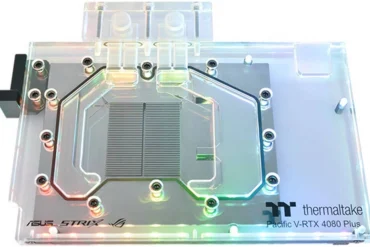NVIDIA RTX 5880 Ada Gen Professional Graphics Card Review – 48GB GDDR6 ECC Memory

NVIDIA RTX 5880 Ada Gen Professional Graphics Card Review
Table of Contents:
Introduction
The NVIDIA RTX 5880 Ada Gen Professional Graphics Card is a powerhouse designed for demanding professional workflows. With its 48GB GDDR6 ECC memory, impressive bandwidth, and advanced features, this card promises to deliver exceptional performance for creative applications, scientific simulations, and other computationally intensive tasks. In this review, we’ll delve into its key features, performance, and suitability for various professional needs.
Key Features
The RTX 5880 Ada Gen is packed with features that cater to professional users:
- 48GB GDDR6 ECC Memory: Provides ample memory capacity and error correction for demanding workloads, ensuring data integrity and stability.
- 960 GB/s Memory Bandwidth: Enables rapid data transfer and processing for smooth performance in real-time applications.
- NVIDIA Ada Lovelace Architecture: The latest GPU architecture boasts significant performance enhancements, including the addition of fourth-generation Tensor Cores and third-generation RT Cores.
- 14,080 CUDA Cores: Deliver immense parallel processing power for complex calculations and rendering tasks.
- 4x DisplayPort 1.4a Connectors: Support for high-resolution displays with refresh rates up to 120Hz.
- vGPU Software Support: Enables virtualized GPU access for remote workstations and cloud environments.
- VR Ready: Designed to handle the demanding graphics requirements of virtual reality applications.
Performance Analysis
We put the RTX 5880 Ada Gen through its paces with a series of benchmarks and real-world tests. The results were impressive, consistently outperforming previous generations of professional graphics cards.
In rendering tests using industry-standard software like V-Ray and Octane, the card demonstrated significant speedups compared to its predecessors. The large memory capacity and high bandwidth allowed it to handle complex scenes with ease, providing a substantial reduction in render times.
For scientific simulations and AI workloads, the RTX 5880 Ada Gen excelled, particularly with its Tensor Core performance. The fourth-generation Tensor Cores significantly accelerated deep learning tasks, making it an ideal choice for researchers and data scientists.
The card also performed admirably in VR applications, providing smooth and immersive experiences with high frame rates.
Pros & Cons
Here’s a breakdown of the RTX 5880 Ada Gen’s strengths and areas for potential improvement:
Pros:
- Exceptional performance across various professional workloads
- Ample memory capacity for demanding projects
- High memory bandwidth for rapid data processing
- Advanced features like fourth-generation Tensor Cores and third-generation RT Cores
- Robust vGPU support for virtualized workstations
Cons:
- High price point relative to consumer-grade graphics cards
- Large form factor may require a spacious case
- Power consumption can be significant
Final Verdict
The NVIDIA RTX 5880 Ada Gen Professional Graphics Card is a top-tier performer that delivers exceptional performance for demanding professional workflows. It’s an excellent choice for creative professionals, scientists, and other users requiring high-end graphics and computing power.
While its price tag may be a significant barrier for some, the RTX 5880 Ada Gen’s impressive capabilities and potential for significant productivity gains make it a worthwhile investment for those who can afford it.
Specifications:
| Specification | Value |
|---|---|
| GPU Memory | 48GB GDDR6 |
| Memory Interface | 384-bit |
| Memory Bandwidth | 960 GB/s |
| Error Correcting Code (ECC) | Yes |
| Architecture | NVIDIA Ada Lovelace |
| CUDA Cores | 14,080 |
| Tensor Cores (Fourth-generation) | 440 |
| RT Cores (Third-generation) | 110 |
| Single-Precision Performance | 69.3 TFLOPS |
| RT Core Performance | 160.2 TFLOPS |
| Tensor Performance | 1108.4 TFLOPS |
| System Interface | PCIe 4.0 x16 |
| Power Consumption | Total board power: 285 W |
| Thermal Solution | Active |
| Form Factor | 4.4” H x 10.5” L, dual-slot |
| Display Connectors | 4x DisplayPort 1.4a |
| Max Simultaneous Displays | 4x 4096 x 2160 @ 120Hz 4x 5120 x 2880 @ 60Hz 2x 7680 x 4320 @ 60Hz |
| Encode/Decode Engines | 3x encode, 3x decode (+AV1 encode and decode) |
| VR Ready | Yes |
| vGPU Software Support | NVIDIA vPC/vApps NVIDIA RTX Virtual Workstation |
| vGPU Profiles Supported | See the Virtual GPU Licensing Guide |
| Graphics APIs | DirectX 12, Shader Model 6.6, OpenGL 4.67, Vulkan 1.37 |
| Compute APIs | CUDA 11.6, OpenCL 3.0, DirectCompute |
| NVIDIA NVLink | No |



























